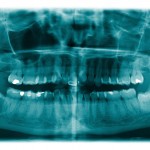
The surgical removal of impacted third molars is a commonly performed operation and early post-operative complications include pain, swelling and trismus. A number of studies have suggested that platelet-rich fibrin may be helpful in reducing these post-operative complications.
The aim of this review was to assess whether platelet-rich fibrin (PRF) was effective and safe for patients during the extraction of bilateral mandibular third molars.
Methods
Searches were conducted in the PubMed, Embase, and the Cochrane library databases. Randomised controlled trials in patients requiring bilateral surgical removal of mandibular third molars with one group receiving PRF that other no PRF or placebo. Outcomes included alveolar osteitis, osteoblastic activity, pain, swelling, trismus, and soft tissue healing. Only English language studies were considered. Searches, study selection, data extraction and study quality assessment were carried out independently by two reviewers. The Cochrane risk of bias tool was used to assess individual studies and the overall outcomes were assesses using the GRADE approach. weighted mean differences (WMD), Standard mean differences (SMD) and risk ratios (RR) and 95% CIs were calculated and meta-analysis conducted.
Results
- 10 RCTs (6 split-mouth, 4 parallel) involving a total of 314 patients were included.
- 5 studies were considered to be at high risk of bias and 5 at unclear risk.
- A summary of the findings from the meta-analysis are shown in the table below.
| Outcome | No. of studies | Effect size | GRADE rating |
| Pain | 6 | Low | |
| 3rd day | SMD = – 0.53 (95%CI; - 1.02 to -0.05) | ||
| 7th day | SMD = − 1.05 (95%CI; − 2.14 to 0.03) | ||
| Swelling | 4 | Moderate | |
| 3rd day | WMD = − 1.00 (95%CI; − 2.17 to 0.17) | ||
| 7th day | WMD = − 0.61 (95%CI; − 1.32 to 0.10) | ||
| Trismus | 3 | Very low | |
| 3rd day | SMD = − 0.25 (95%CI; − 0.64 to 0.15) | ||
| 7th day | SMD = − 0.25 (95%CI; − 0.64 to 0.15) | ||
| Alveolar Osteitis | 3 | RR = 0.35 (95%CI; 0.16 to 0.75) | Low |
Conclusions
The authors concluded: –
our study confirmed that PRF only reduces some of the postoperative complications but does not prevent them. PRF administered after third molar extraction significantly relieved pain, swelling, and reduced the incidence of alveolar osteitis. Therefore, further studies with a larger dataset and well-designed models are essential to validate the current findings.
Comments
In 2018 we looked at an earlier review of this topic (Dental Elf – 22nd Jan 2018). The 2018 review had searched a broader range of databases than the current review although both that review, and this new review have restricted their inclusions to English language paper. Restricting searches to the English language only may result in exclusion of relevant studies. All 5 of the RCTs included in the 2018 review are included in this new review along with 5 additional RCTs. However, the RCTs as small and none of the RCTS were considered to be at low risk of bias.
While the review suggests some statistically significant for some outcomes at some timepoints the clinical important of these findings in unclear. Additional large and well conducted and reported trials that include more patients focused outcomes and assessment of cost effectiveness are needed.
Links
Primary Paper
Xiang X, Shi P, Zhang P, Shen J, Kang J. Impact of platelet-rich fibrin on mandibular third molar surgery recovery: a systematic review and meta-analysis. BMC Oral Health. 2019 Jul 25;19(1):163. doi: 10.1186/s12903-019-0824-3. PubMed PMID: 31345203; PubMed Central PMCID: PMC6659259.
Other references
Dental Elf – 18th Mar 2019
Dental Elf – 22nd Jan 2018
Third molar extraction – does platelet-rich fibrin improve outcomes?
